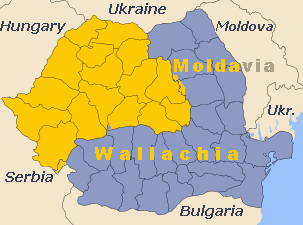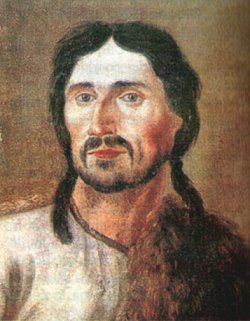User:Lyricmoonstar/sandbox
Appearance
Revolt of Horea, Cloșca and Crișan
[edit]
The Revolt of Horea, Cloșca and Crișan (31 October 1784 – 14 December 1784) began in Zaránd County, Transylvania, but it soon spread throughout all Transylvania and the Apuseni Mountains.
[edit]The revolt was directly related to the feudal Serfdom and the lack of political equality between Orthodox-Christian Romanians and Catholic nations of Transylvania. In Siebenbürgen (Transylvania) the situation of the Romanian peasants was quite unfavorable. Being inhabitants that where barely tolerated and had no political rights.
[edit]


After Leopold II, Holy Roman Emperor 's re-conquest of the principality and its incorporation back into the domain of Habsburg Sovereighnty in 1691, Hungarians and Germans (Transylvanian Saxons) gained and rights and privileges. Peasants however, had no representation in politics. The Romanian peasantry also had no guarantees for their Orthodox church institutions. As mouthpiece for the Romanian peasants Horea – whose official name was Vasile Ursu Nicola – travelled to Vienna often in the years from 1779 to 1782 to explain the hardships of the Transylvanian peasantry and lack of representation, but his words provided nothing for the peasantry. Two years later a peasants protest movement took place under Horea’s command and direction: many peasants refused to continue to carry out the slave like labor system of obligatory labour required by their landlords, wishing instead to travel to Karlsburg and enroll in the army as an option to better there living situation and gain many rights they didn't currently have. This plan was halted by the police, which resulted in a second bloody uprising.*
[edit]As long as the Gubernium and the military leadership debated about a possible intervention – awaiting the order from Vienna, the Hungarian nobility organized its defence, they trialed in Deva, Romania and executed 56 captured peasants.
[edit]


As Joseph II, Holy Roman Emperor ordered the army to intervene, the uprising was ended by Horea on 14 December 1784, at Câmpeni (German: Topesdorf; Hungarian: Topánfalva[1]). Afterwards, in January 1785, the leaders were captured. From the more than 600 captured rebels, 120 were sentenced; 37 death penalties were delivered initially but they were changed to imprisonment as a result of the amnesty of the emperor, with an exception regarding the three leaders. Horea and Closca ()were executed by the Hungarian authorities byBreaking wheel on 28 February 1785 at Dealul Furcilor (Gabelberg, Forks Hill), Alba Iulia (Gyulafehárvár). Crișan hanged himself on the night before the execution
[edit]After the protest had been put down Joseph II responded by enacting a Patent for the Abolition of Serfdom for Transylvania in 1785. The uprising reverberated throughout western Europe.*
[edit]
References
1[2]
2[3]
3[4]
4[5]
5 http://mek.oszk.hu/03400/03407/html/322.html
Sources
The definitive work on this topic is David Prodan, Rascoala lui Horea. Bucharest: Editura Stiintifica si Enciclopedica, 2 vols, 1979.
http://mek.oszk.hu/03400/03407/html/322.html
<span typeof="mw:Nowiki" id="mwPw"></span>
 | This is a user sandbox of Lyricmoonstar. You can use it for testing or practicing edits. This is not the sandbox where you should draft your assigned article for a dashboard.wikiedu.org course. To find the right sandbox for your assignment, visit your Dashboard course page and follow the Sandbox Draft link for your assigned article in the My Articles section. |
- ^ "Câmpeni", Wikipedia, 2018-05-12, retrieved 2019-02-23
- ^ "Kitör a Horea és Cloşca vezette felkelés". Múlt-kor történelmi magazin (in Hungarian). 2004-05-21. Retrieved 2019-02-24.
- ^ "1785. február 28. Horea és Closca kivégzése Gyulafehérváron". www.rubicon.hu. Retrieved 2019-02-24.
- ^ "Policy toward Villeins and the Horea Uprising". mek.oszk.hu. Retrieved 2019-02-24.
- ^ "ExecutedToday.com » 1785: Horea and Closca, Transylvanian rebels". Retrieved 2019-02-24.
